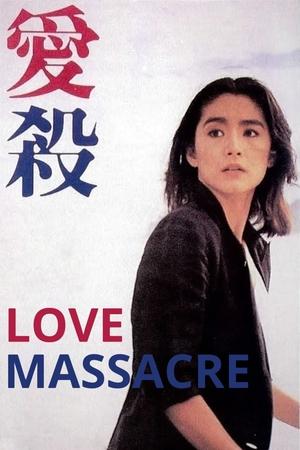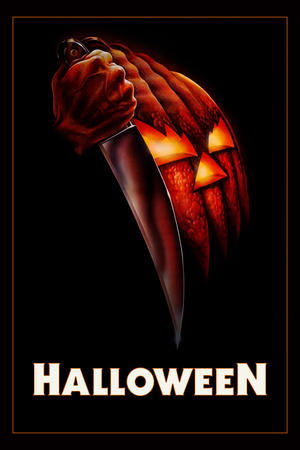‘Love Massacre’ – Rediscovering This Lost Hong Kong Slasher From 1981
The 1981 film Love Massacre (Ai Sha) was a jarring shift in genre for Patrick Tam. After making his directorial debut with wuxia outing The Sword, Tam returned with a tale of drama and horror. Now, to the uninitiated, this collaboration between Tam and writer Joyce Chan — they would work together again — seems […]

The 1981 film Love Massacre (Ai Sha) was a jarring shift in genre for Patrick Tam. After making his directorial debut with wuxia outing The Sword, Tam returned with a tale of drama and horror. Now, to the uninitiated, this collaboration between Tam and writer Joyce Chan — they would work together again — seems like the furthest thing from horror; the film’s first half is an attractive but somewhat aimless tune about the pangs of romance, the uncertainty of life, and the toils of obligation. Once you reach the other side of this cinematic compromise between arthouse and commercial, though, it becomes clear why Love Massacre has amassed such a cult following over the years.
In the vein of horror films where expats and tourists discover peril overseas, Love Massacre chronicles the grisly misfortune of several Chinese international students. Shot in California, the film begins with a foreshadowing sign of things to come; Tina Lau’s character, the ironically named Joy, attempts suicide after a devastating breakup. Concerned friends and classmates, including Ivy (Brigitte Lin) and Louie (Charlie Chin), keep a watchful eye on Joy before summoning her brother Chiu-Ching (Chang Kuo-chu) from Hong Kong. The gesture ultimately proves to be a grave mistake not only for Ivy, but everyone she knows.
Where Love Massacre naturally loses a lot of new viewers, namely those awaiting a straighter horror film, is its first two acts. However, anyone familiar with Brigitte Lin may be intrigued enough to keep watching. Lin, a beloved icon of Chinese cinema, starred in a vast amount of conventional romance fare before Love Massacre, so for her to show up in a slasher disguised as a drama likely came as a shock to her uninformed fans. It’s an unexpected earlier role for the Chungking Express star, to say the least, yet up until the film’s sharp turn into horror, Ivy isn’t too incompatible with Lin’s previous parts. One might even say Ivy herself is not all that different from Lin’s more typical dramatic and romantic heroines, seeing as the protagonist of Love Massacre is also running away from intense emotions brought on by passion and pain, and dealing with the consequences of a broken heart.

Image: Brigitte Lin and Chang Kuo-chu in Love Massacre.
What immediately sticks out about Love Massacre, either in sum or in parts, is its artistic flair. Tam and art director William Chang evidently went to painstaking lengths when deliberating the chromatic choices, regardless if the results weren’t always sensical or consistent. A conspicuous degree of solid reds, whites and blues make up the central cast’s wardrobe, as well as portions of their surroundings. For instance, Ivy largely dons white garments, although there is that crucial phase of the story where Lin’s character is decked out in either red or blue apparel. In fact, Ivy’s growing sense of worry and doubt is prefaced with these two specific colors; upon meeting Chiu-Ching, Ivy goes from neutral white to shades of red or blue. Ivy’s anticipation and desire are signified by the reds, whereas the blues are more prevalent, not to mention fleeting, once Ivy and Chiu-Ching consummate their mutual attraction and after Joy dies in a car accident. That brief attempt at something of a relationship, amidst sudden loss and grief, is denoted by Ivy and Chiu-Ching each wearing blue in their shared scenes, yet that color fades from the former’s wardrobe as her romantic feelings wane, then are replaced with fear.
Despite the big city backdrop, Tam is able to create a kind of pocket universe or large liminal space for Ivy and her friends. Anyone else seen on screen is given little to no attention from the camera, and apart from a mortician, the peripheral characters’ interaction with the main cast is limited and inconsequential. Practically empty streets, parks, and even a roller coaster and amusement park are additional, if not incidental, expressions of an eerily empty and lonely city. The film’s supplementary aim to parallel the characters’ psychological well-being with their environments is then most pronounced when Tam and cinematographer Brian Lai are juxtaposing Ivy and Joy. Picturesque visits to the city’s outskirts and the countryside, on top of scenic car drives along an endless and open road, are physical proofs of Ivy’s happiness and dynamism. Meanwhile, Ivy’s contentment is contrasted with Joy’s melancholy and inertness; she is first lying creepily still on the grass of a deserted city park, stuck in one place. Later, Joy replicates that same corpse-like posture, except now in the bloody wreckage of a totaled car.

Image: Brigitte Lin, Tina Lau and Charlie Chin in Love Massacre.
If the beginning and middle sections of Love Massacre are treated as tense buildup, as opposed to drawbacks, then the last leg of the film is the payoff. Especially if horror is the allure here. The origin of Chiu-Ching’s psychosis is never investigated beyond the assumption of hereditary insanity and stress disorder, but the product of his ensuing blind rage is nothing short of visceral. And in lieu of a more evenly paced one-by-one scenario, Tam shoots for a killing field approach where Ivy’s friends, all unsuspecting women, are picked off in fast succession and without any real fightback. The victims’ zero resistance to their attacker, a madman madly in love, could be off-putting if long and suspenseful chases are the preference for these kinds of films; designated final girl Ivy is not even around for Chiu-Ching’s murder spree. Nevertheless, Love Massacre’s conclusion is a well-earned reward, so long as it’s viewed in the proper form.
If there’s anything from the classic Hong Kong New Wave output that would benefit tremendously from a physical media upgrade, it would have to be Love Massacre. For the fact that this film remains trapped on DVD — and a lousy one at that — is bewildering. That now out-of-print DVD delivers a near unwatchable and completely unflattering experience, preventing both fans and newcomers from fully appreciating the distinct aesthetic that is so vital to this film’s identity. However, after years and years of only a dodgy digitization to tide them over, and maybe the occasional retrospective screening in some regions, Hong Kong cineastes were surely beside themselves after a generous soul uploaded a significantly better copy of Love Massacre online. Less bizarrely cropped and not anywhere as washed out and discolored as before, this version even allows the grisliness of Chiu-Ching’s ruinous frenzy to be seen without truncation or content-specific censorship. And as is often the case with films that have fallen through the cracks, for whatever reason, it is up to the fans to keep these obscurities’ names known and spoken.
Opinions on Love Massacre vary, and no doubt the more critical ones are impacted by its poor film preservation, front-heavy drama, and delayed delivery of horror. Yet as far as ’80s slasher film formats go, Patrick Tam’s take is unique, as well as a shining example of style over substance. Although, it is also reasonable to say that in Love Massacre, the style is the substance.
Horrors Elsewhere is a recurring column that spotlights a variety of movies from all around the globe, particularly those not from the United States. Fears may not be universal, but one thing is for sure — a scream is understood, always and everywhere.

Image: In Love Massacre, Brigitte Lin’s Ivy checks on her “sleeping” friend, not realizing that she’s actually dead.




